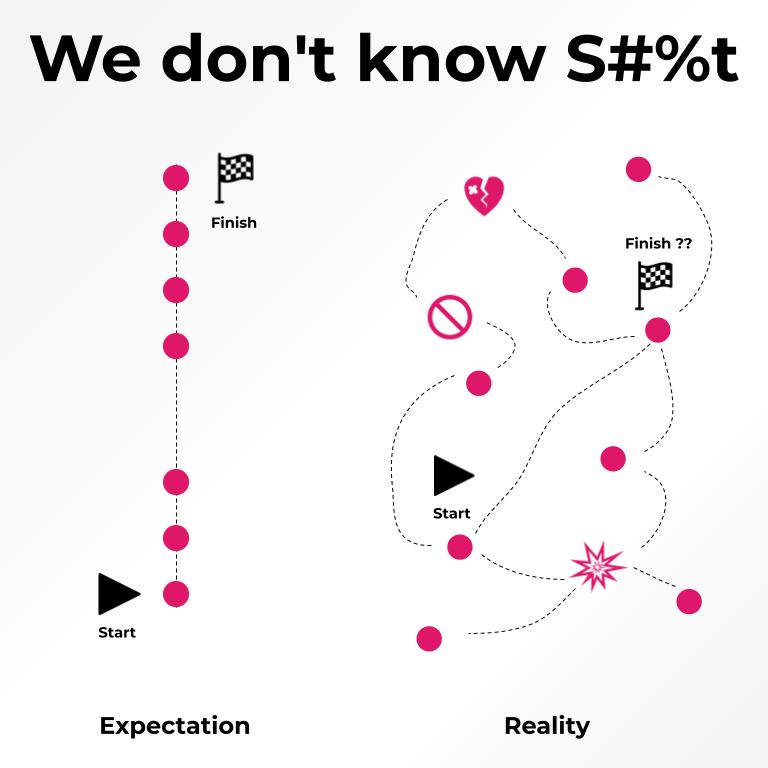Learning through pathways
This is an interesting post that uses Google Maps as a metaphor for learning. In other words, get from where you are, to where you need to be, using an optimal route.
The author did some research, built pathways based on the findings, and presented them back to users. Who didn’t like them.
A similar approach was used in the Mozilla Discover project around Open Badges which is written up on Badge Wiki. The difference there, I guess, was that people were able to recognise specific inflection points that had meaning for them, and ascribe badges.
My opinion would be that people learn in different ways because of the context they bring to the table. You can rely on certain things to inspire most people, for example, or other things to resonate with some people. But there’s always a bit of experimentation to learning. It’s more like improvisational jazz than a symphony!
So, we do learn through pathways, but those pathways only have certain parts of the journey in common. To use another metaphor, it’s a bit like sharing a bus journey with other passengers for several stops, before getting on another bus (or hitch-hiking, or taking a taxi, or…)
I wanted to check the assumptions I had regarding the generation of paths for the Learning Map. So I scheduled interviews with instructors of these schools who were themselves also famous musicians. Their assumption was that I was interviewing them to create a story about their lives, but I was actually doing something far more interesting, I was deeply listening to the story of what and how they learned, and to the chronological order of their learning journey.More on this in this blog post about the session we ran at The Badge Summit on designing for recognition. Be sure to click through to the accompanying slide deck and the constellation model approach in slides 16 and 24!I asked them to describe their musical career, I let them know I wanted to create a timeline of their story, to start at the very beginning, and then to take me step by step through to their successes of today. Then I sat back and started to take notes:
Their first experience with music may have been with their mom who played the guitar, a lead singer they had a crush on, or a drum kit they got as a 5-year-old. They learned some key lessons and their journey kicked off. Over time, they may have learned to sing in Church, or worked in a recording studio. Some went to school, where they were introduced to new ideas from their peers, started a band, or trained underneath a mentor. Many went in completely different directions, they first become a chef, worked on a boat, or started bartending, each experience taught them skills they would later apply to their music. As they shared their experiences, I took notes, not about the events, the characters, or places, but only on the things they learned and when. I was mapping out their learning journeys, step by step, from their first experiences to their current work. I made an effort to cut through the superficial, and get to the heart of the lessons learned, this required the musician to deeply introspect, and was a fascinating experience on its own.
Several weeks later, after they had forgotten about the interviews and I had time to map each story out, I presented it back to them. But not as a story of their lives, instead, as a course, I wanted to run by them and get their professional opinion on. “What do you think of this course” “Do you think this is a good structure for a course?” I asked. They did not know this course was modeled after their own stories, they did not have any reason to tie this course back to the interviews conducted some months back and their responses were resounding: “This is a terribly designed course!” “How could you even think of wasting my time with this”, “Don’t you know that you need to understand X before you learn Y”…
